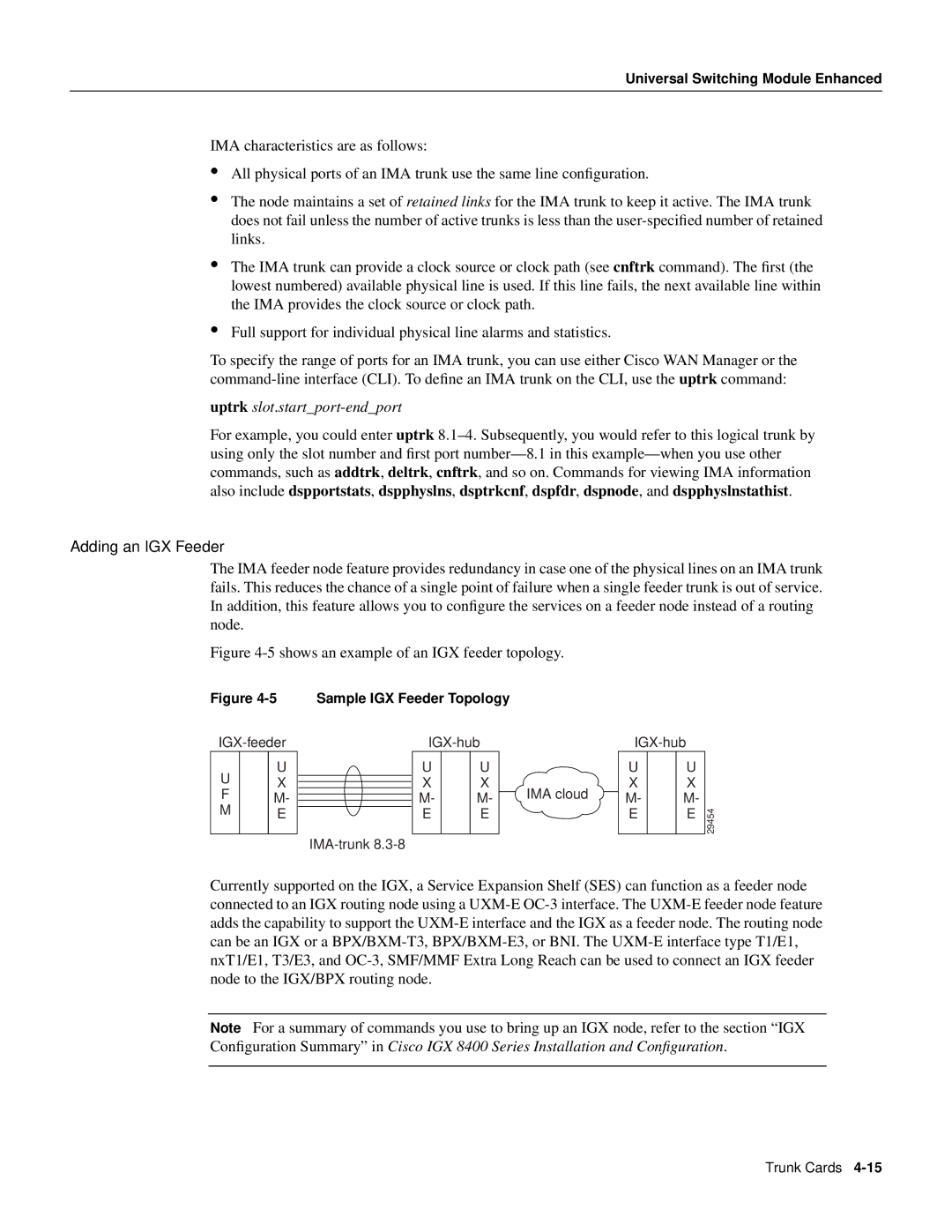
Universal Switching Module Enhanced
IMA characteristics are as follows:
•All physical ports of an IMA trunk use the same line configuration.
•The node maintains a set of retained links for the IMA trunk to keep it active. The IMA trunk does not fail unless the number of active trunks is less than the
•The IMA trunk can provide a clock source or clock path (see cnftrk command). The first (the lowest numbered) available physical line is used. If this line fails, the next available line within the IMA provides the clock source or clock path.
•Full support for individual physical line alarms and statistics.
To specify the range of ports for an IMA trunk, you can use either Cisco WAN Manager or the
uptrk slot.start_port-end_port
For example, you could enter uptrk
Adding an IGX Feeder
The IMA feeder node feature provides redundancy in case one of the physical lines on an IMA trunk fails. This reduces the chance of a single point of failure when a single feeder trunk is out of service. In addition, this feature allows you to configure the services on a feeder node instead of a routing node.
Figure 4-5 shows an example of an IGX feeder topology.
Figure 4-5 Sample IGX Feeder Topology
U | U |
X |
FM-
M E
U |
| U |
X |
| X |
M- |
| M- |
E |
| E |
|
|
|
IMA cloud
U |
| U |
X |
| X |
M- |
| M- |
E |
| E |
|
|
|
29454
Currently supported on the IGX, a Service Expansion Shelf (SES) can function as a feeder node connected to an IGX routing node using a
Note For a summary of commands you use to bring up an IGX node, refer to the section “IGX Configuration Summary” in Cisco IGX 8400 Series Installation and Configuration .
Trunk Cards
